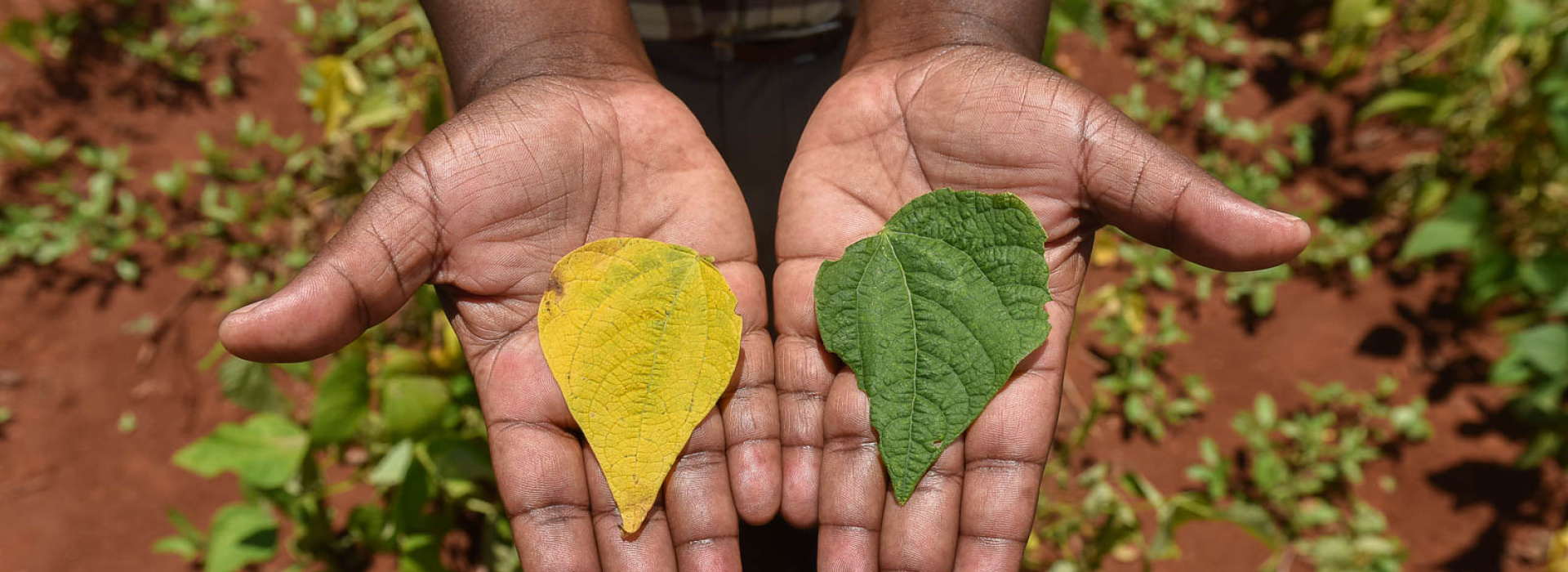Foresight and trade-off analyses are key tools to engage diverse stakeholders by jointly identifying different plausible future scenarios that inform the design and prioritization of investments and policies that aim for longer-run impacts across multiple domains. Shocks such as the current global pandemic COVID-19 emphasize the importance of anticipating multiple possible futures—and their impacts—to advance transformation of interconnected food, land, and water systems in a climate crisis. This blog considers the current design of the One CGIAR research portfolio and investment plan over the period 2022-2024, which offers a unique opportunity to thoroughly integrate foresight and trade-off analyses into ongoing One CGIAR research and management practices.
Integrating Foresight and Trade-Off Analyses Into the 2030 CGIAR Research and Innovation Strategy
Most research on agricultural research and development (R&D) investments shows that the measurable impacts typically peak between 10 and 25 years after R&D investments and that the more public goods-oriented the R&D, the greater the lag to impact. Although the current process of One CGIAR research portfolio and investment planning uses just a three-year horizon, it anticipates expected payoffs over the coming decade(s). Foresight is therefore required to anticipate future conditions that will influence when, where, and how much these investments ultimately diffuse, adapt, and scale so as to optimize today's agricultural research portfolio composition and performance.
The 2030 CGIAR Research and Innovation Strategy identified five impact areas. Decision-makers should keep in mind that there is no investment that will affect one of those impact areas without having some effects, many of them unintended but foreseeable, on the other areas. This requires trade-off analysis as a natural complement to foresight. The Independent Science for Development Council (ISDC) has solid experience in both tools with recent publications of foresight reviews and a follow-up ISDC trade-off analysis report, both adapted to a more general audience in the first issue of the peer-reviewed journal Q Open.
Easing a Complex Qualitative and Quantitative Process
A key recommendation, when designing a research portfolio, is to consider what demographic, economic, environmental, technological, institutional, or other structural changes might affect the impact pathways of a given research plan. Identifying prospective barriers to adoption, adaptation, and diffusion, and how they might change over time, appears crucial in a foresight process. Foresight does not have to be (exclusively) model based, although modelling can help to seed inclusive foresight discussions and identify (quantify) foreseeable consequences of changes in complex systems.
Quantification can be very useful, but the key step is really an early engagement in research co-design of diverse stakeholders who may have different visions of the future, and together identify performance targets and associated indicators. This can help anticipate prospective impediments, or accelerators, to intended as well as unintended changes, especially on non-targeted impact area(s). Foresight and trade-off analyses methods have to be rigorous but also participatory and easy to explain. The real purpose of the exercise is not so much a ranking or quantification of results, but rather the process of joint identification, monitoring, and evaluation of key performance measures. Regular discussion of those performances’ measures, and participatory revisiting of prior foresight and trade-off analyses, can inform ongoing portfolio review and eventual rebalancing.
Building up the Capacities of One CGIAR and Partners
CGIAR, mostly under the umbrella of the Foresight Team, has been producing and using foresight analyses for many years (for example, the Global Futures & Strategic Foresight project). Given the complexity of interconnected human and natural systems, there is room for improving foresight methods and data. Gender, nutrition, social inclusion, and poverty impacts remain poorly covered, compared to productivity, economic growth, or greenhouse gas emissions impacts. Likewise, foresight analyses rarely convey likelihood intervals nor consider systemic shocks, although the COVID-19 pandemic clearly illustrates the need to consider such low-but-nonzero-probability prospects. Trade-off analyses have been much less common within CGIAR, although some cutting-edge work has been done in collaboration with the Research Centers. ISDC sees considerable value to CGIAR investment in foresight and trade-off analyses capacity within the One CGIAR community, including key stakeholders and partners, and mainstreaming foresight and trade-offs analyses in ongoing One CGIAR research investment planning, monitoring, and evaluation, starting at its inception phase.
Foresight and trade-off analyses can and should permeate all research activities in a structured and systematic way. This can ensure that One CGIAR research portfolio draws on diverse stakeholder perspectives to anticipate possible futures, challenges, and opportunities. Mainstreaming these practices will require implementing mechanisms for identifying and engaging key partners at agri-food system, country, regional, and global scales. Capacity building, including skills, tools, and data systems, will be necessary to make foresight and trade-off analyses routine operational management tools for the worldwide science community and future leaders.
In short, institutionalizing foresight and trade-off analyses across One CGIAR is fundamental to achieving lasting impacts at scale. Wise investment decisions today that consider multiple possible futures and impacts, and routine revisiting of those decisions in an adaptive management model, will maximize One CGIAR contributions to transforming the agri-food systems of tomorrow to benefit the planet and all its peoples.



